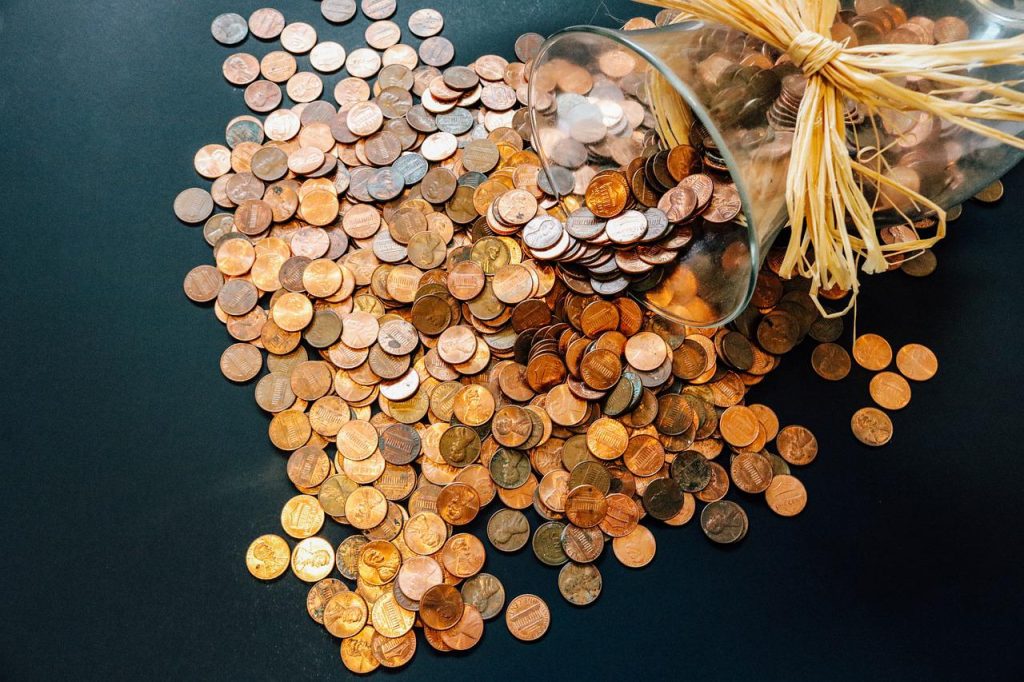The US Penny is a one cent coin that represents one hundredth of a US dollar. It has been the lowest face value physical unit of currency since 1857. However, the US Penny has several fascinating facts that make it more interesting to collectors than the average coin. Hopefully, this information will be useful to you as you begin your collection of United States coins.
Table of Contents
What is a Penny?
If you have ever wondered, “What is a Penny?” you are not alone. Pennies are used as currency around the world. The word penny is a slang term for the one cent coin issued by the United States.
How Much is 80000 Pennies in Dollars?
1 penny = 0.01 dollar
80,000 pennies = 800 dollars
So, 80,000 pennies in dollars = 800 dollars
How Much is 80000 Pennies in GBP or pounds?
The British economy has global influence. The UK is considered a major business center in Europe. So, the British pound has economic status and is traded worldwide. The British currency knew ups and downs (like any global currency) when in 2015-2017, it lost its value relative to the other currencies.
The decline in the pound’s value hurts the local British economy and especially the people of the United Kingdom who purchase goods and services in the euro, the United States, the far east, etc.
1 penny = 0.01GBP/pounds
80,000 pennies = 589.93 GBP/Pounds
So, 80,000 pennies = 589.93 GBP/pounds
How Much is 80000 Pennies in INR?
80,000 pennies = 800 dollars
800 dollars = 59413.48 INR ( 1$ = 74.25 INR)
On the exchange rate, 1$ = 77.62 INR, 800 dollars equals 62,096 Indian Rupees.
How Much is 80000 Pennies in Cents?
1 penny = 1 cent
80,000 pennies = 80,000 cents
So, 80,000 pennies = 80,000 cents
How Much is 80000 Pennies in PKR?
80,000 pennies = 800 dollars
800 dollars = 158,504 PKR (exchange rate of 1$ = 198.13 PKR)
How Much Are 80,000 Pennies Worth?
80,000 pennies will be equal to worth around 800 dollars.
How Much Are 600,000 Pennies in Dollars?
600,000 pennies will be equal to worth around 6000 dollars.
Top Fun Facts About the US Pennies
Here are some interesting facts about the US Penny that you may not know!
1. Coin made of zinc coated with copper
In 1837, the United States penny was made of pure copper. After that, it was composed of copper alloys such as bronze, brass, and zinc. Then, in 1943, it was replaced by zinc-plated steel. Today, the US penny contains just 2.5 percent copper.
Copper sulfate is a naturally occurring copper salt used as a pesticide and as a fungicide on plants. It is also used in water treatment to kill aquatic vegetation and snails. Despite its many uses, copper sulfate is highly toxic to humans and must be avoided.
The composition of the US Penny is not entirely clear. The metals that cover it vary widely from year to year. The copper pennies are slightly less dense than those from 1981. However, if you want to know whether your pennies are copper or zinc, you need to look at their metal composition.
Coins of this type should be protected against damage by a plastic or rubber case. Zinc pennies are the most common and easily recognizable coins.
2. Around 50000 pennies can fit into a cubic foot.
3. US Penny has a diameter of 0.75 inches and a height of 1.52 millimeters.
4. A new jersey coin dealer sold a 1943 copper penny for $1.7 M. It became one of the most valuable penny transactions in history.
Is There Any Mintmark On A Penny?
The U.S. Mint issues different types of mintmarks on its coins. The Lincoln Penny mintmark is found on the obverse (heads-side) of the coin. The mint mark on the Jefferson Nickel and Roosevelt Dime can be found above the date.
The Washington Quarter mintmark is located behind the ribbon in Washington’s hair at four o’clock. While the Philadelphia mint has been in operation for over 200 years, it has not been used on its coins since 1854.
What Is The Best Way To Store Pennies?
One of the best ways to store pennies is using rolling coin paper. Not all coins can fit in a rolling paper, only a certain number of coins can fit.
Alex is fascinated with “understanding” people. It’s actually what drives everything he does. He believes in a thoughtful exploration of how you shape your thoughts, experience of the world.

